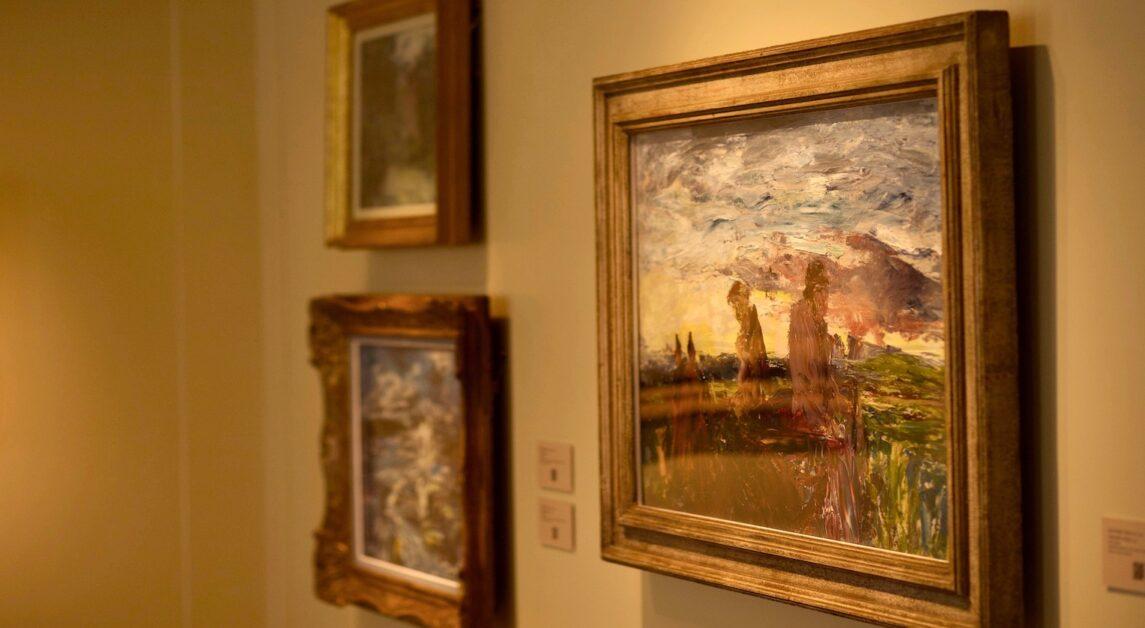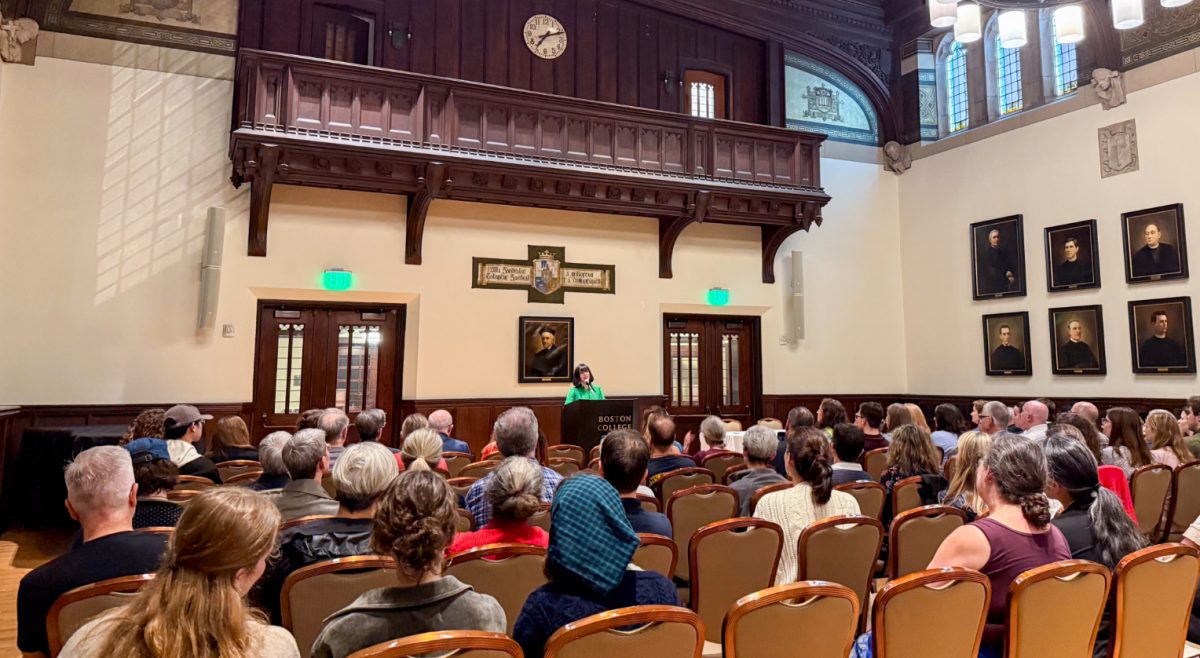Featuring 30 pieces of artwork, the Carolyn A. and Peter S. Lynch Collection at Boston’s College’s McMullen Museum of Art invites viewers into the American countryside of the 19th and early 20th centuries.
The collection, which opened to the public on Oct. 2, is the result of a $20 million donation from Peter Lynch, BC ’65, and his late wife Carolyn Lynch in 2021 and will stand as a permanent fixture in the McMullen Museum. The new exhibit displays the work of prominent artists including Pablo Picasso, William Bradford, Albert Bierstadt, and Jack Butler Yeats.
Visitors can view the collection in the University Conference Center on the first floor of the McMullen Museum, located at 2101 Commonwealth Avenue on BC’s Brighton Campus or through the mobile guide on the museum’s website.
The museum’s mobile guide includes descriptions, interpretations, and information on historical context for each piece of artwork, creating new educational and research opportunities for BC students and professors. The guide includes insights from BC professors in various departments on how different pieces relate to their fields of study.
Picasso’s “Head” is a particularly notable piece in the collection due to Picasso’s eminence and the work’s extreme simplicity—it only consists of a few pen strokes on paper composing a strange looking man.
Many of the pieces on display within the collection offer a view into the American landscape of the past in order for viewers to better understand the present.
For example, American romanticist artist Bradford’s two pieces hold interesting connections to modern discussions of climate change. “Among the Ice Floes” and “Trapped in Packed Ice” depict a much grander Arctic than the melting one commonly depicted in the 21st century.
Naturalist painter Bierstadt also vividly depicts the American landscape. His painting “The Approaching Storm: White Mountain View with Hay Wagon and Figures” casts an eerie light on mid-19th century agricultural work. Jeffery Howe, a professor in the art history department, questions whether the storm may be a metaphor for the American Civil War in his write-up found in the mobile guide.
Bierstadt’s other oil painting “Near the South Pass of the Rocky Mountains” effortlessly depicts the American frontier with a vast landscape of mountains and a river cast in soft hues of yellow and green.
“The work as a whole gathers all that belongs most conspicuously to nature—earth, water, living beings both animate and arboreal,” John Sallis, a professor in the philosophy department, wrote in the mobile guide.
Another work by Bierstadt rounds out the American picture he paints in his previous two works, depicting rocky ocean waves on another oil panel dubbed “Newport Rocks.” Illustrating crashing blue and green waves with sailing ships dotting the horizon, this piece may draw viewers’ attention for its curious paradoxical depiction of the vast yet comforting nature of the ocean.
Yeats, an Irish artist, portrays deeply emotional scenes related to his emigration from Ireland in his works such as “Farewell to Mayo,” which shows the parting of two sad people. His abstract works such as “Quiet Men” and “Rushing Water” display a compelling sense of loneliness to the viewer through the dismayed expressions of the people featured and overall darkness in color of the scenes.














